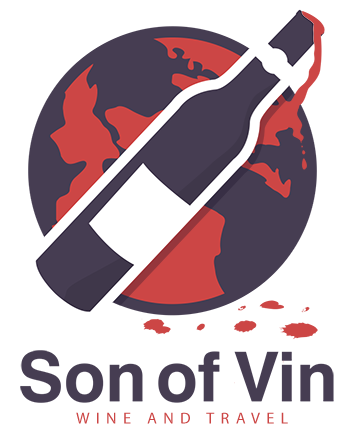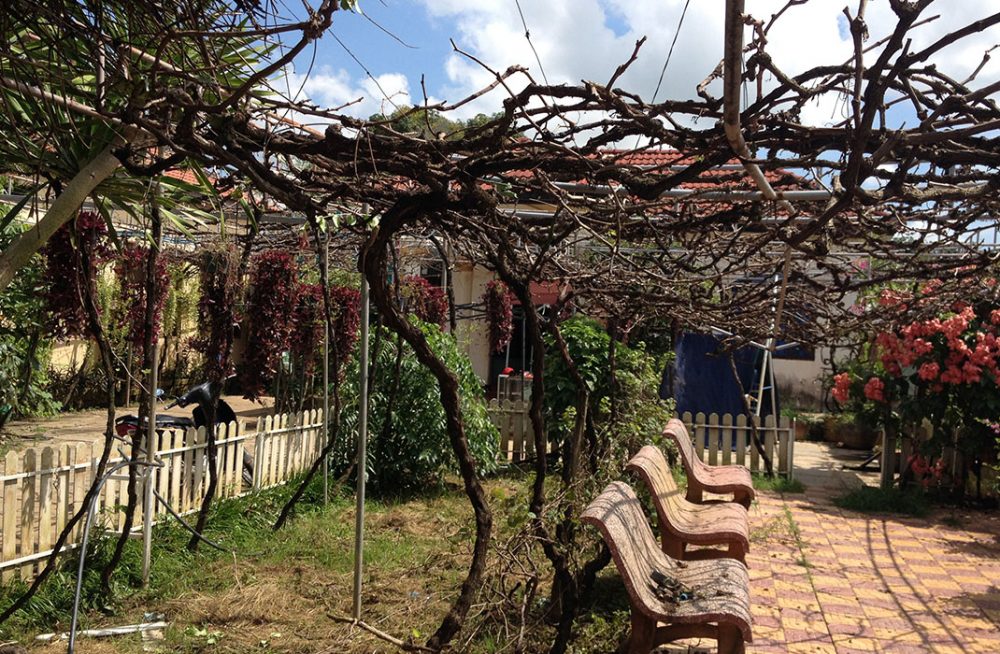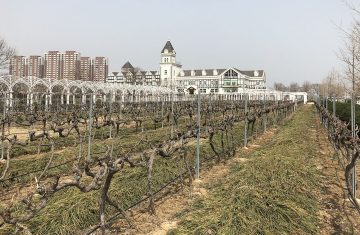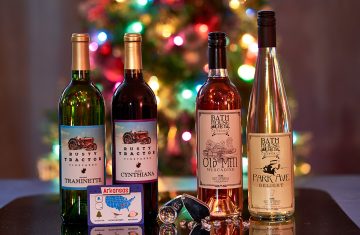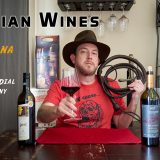Please Note: This was an updated post from a previous blog I used to have. My trip to Cambodia was in 2014 not 2018 as the post date lists.
Cambodia is not in a climate zone naturally suited for wine making since wine grapes typically need cooler temperatures to achieve the perfect levels of sugars and acid. These desired temperatures usually need to swing from warm to cold and with varying degrees of both depending on the wine. Colder wine regions will focus on grapes that work better with colder winters, while warmer wine regions will focus on grapes that can handle a little more heat. Cambodia, however, sits much closer to the equator than what is recommended for a successful wine region.
Grape photosynthesis typically stops generating sugar beyond a certain temperature. This causes the grapes to possibly have more acid and less sugar than what is recommended to create a more desired wine.
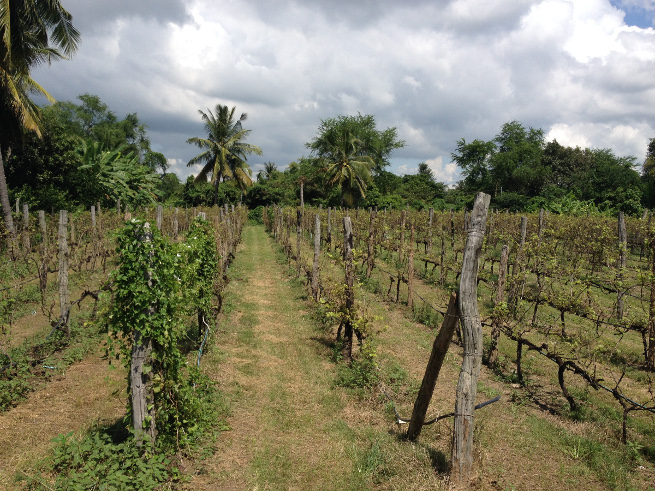
Vineyards in Europe will have 1 crop per year, yet Cambodia could potentially have about 4 total crops per year. This is due to the amount of sun Cambodia gets on a daily basis, and allows their farmers the ability to grow more crops with a faster turnover. This can be a problem, as most winemakers will tell you that grapes for wines need to mature slowly. These cold nights/warm days allow for the sugars to be created at a slow pace, which is believed to create a smoother flavored wine.
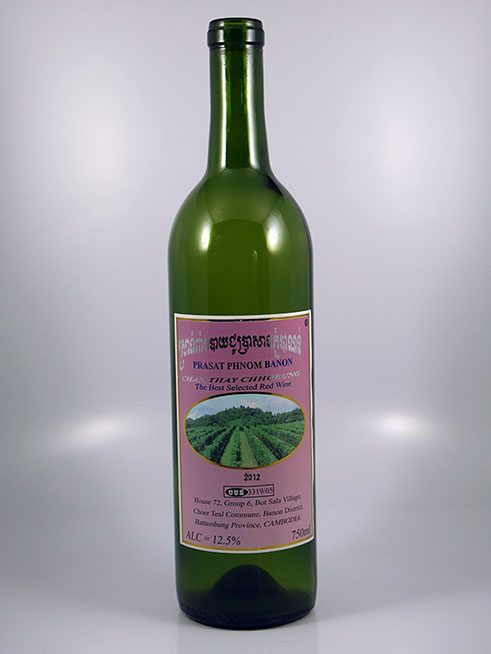
Battambang, Cambodia
So then, Cambodia by default is certainly not an ideal place to grow wine grapes. This may be so, but it hasn’t stopped some locals from trying. Just outside Battambang, the largest city in northern Cambodia, is the Prasat Phnom Banan Winery. In order to diversify their options, they offer wines as well as various grape juices. Their tasting area has a nice patio and a small vineyard to stroll around while you sample their wines. Their are additional vineyards near the winery, as well as additional ones much further away. Sadly, their red wine needs much improvement. It doesn’t say what varietal is in it, but they do use Shiraz and Cabernet Sauvignon. Black Opal is grown as well, but that might be used for juice or eating.
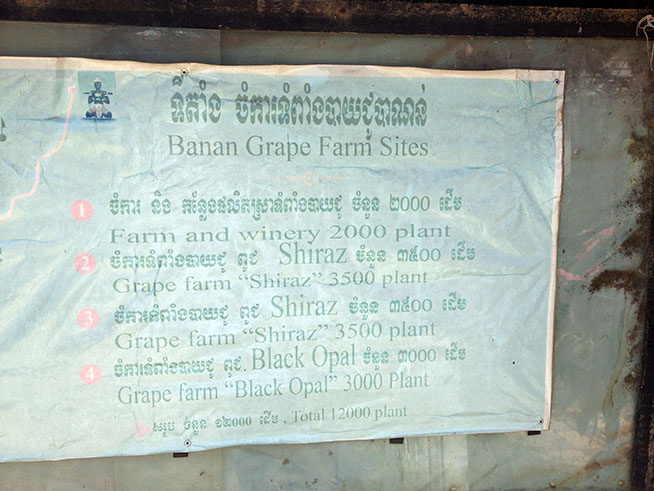
I opened my final bottle not too long ago, and it tasted the same as my previous bottles as well as the version I tasted at the winery itself. There were tartrate crystals on the cork, and the wine had a pungent smell to it. Like if mold, nuts, and wet dog came together. The taste itself was very strange. A little earthy, green, and mixed with gasoline is probably the closest description I can give. It took lots of effort not to just toss the rest of the bottle. Hopefully the next time I go back for some wine, it will have improved.
Cost: About $20 USD.
Pursat Wine
Through the Internet, I had also heard of a man making wine in the city of Pursat. Apparently he uses wild local grapes to make his wines, and even he says that wines from these wild grapes need an acquired taste to enjoy. Regardless, I wanted to find some bottles and bring them home to try.
I managed to find some bottles in a local Phnom Penh liquor store, but I had two very large concerns about the bottles. The shop itself did not have air conditioning. Not totally a big surprise, considering much of Cambodia did not have it. This means that these wines sat out baking in the heat every day for as long as they have been on the shelf. I wasn’t even sure just how long this store had these bottles sitting out, and there wasn’t any sort of vintage or bottling dates. Feeling that I may not be able to find any other bottles elsewhere, I went ahead and purchased some.
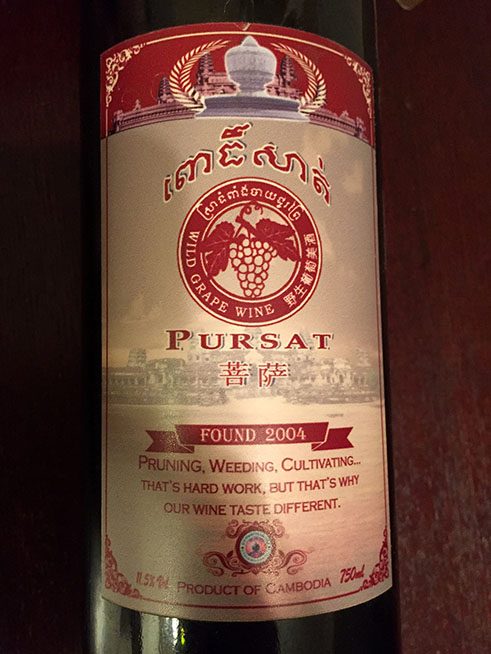
I opened the first bottle months later after returning home. Right away I could tell that this was a small operation. The wine had a weird cork half the normal size. Almost like they cut normal corks in half. Maybe to cut costs? This obviously was concerning for the quality of the wine, since lots of hot air could be leaking into the bottles every day. As I feared, it smelled and tasted like bad vinegar. Or was this vinegar just the required taste I had been told about? Not sure. I opened the second bottle a few weeks later and had the same results.
I hope to find better versions of this wine on my next trip to Cambodia. Maybe I can visit Pursat directly and get bottles from the source? I feel like the bottles I purchased weren’t valid examples for this winemaker.
Cost: About $12 for each bottle.
Cambodia has gone through hell over the past 50 years and there is currently so much poverty. I do see a country undergoing a massive change currently, and I hope this leads to better lifestyles for it’s people.
